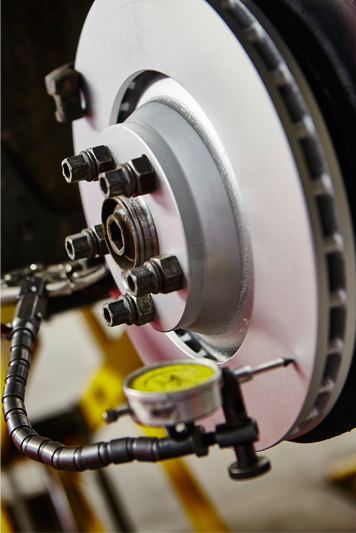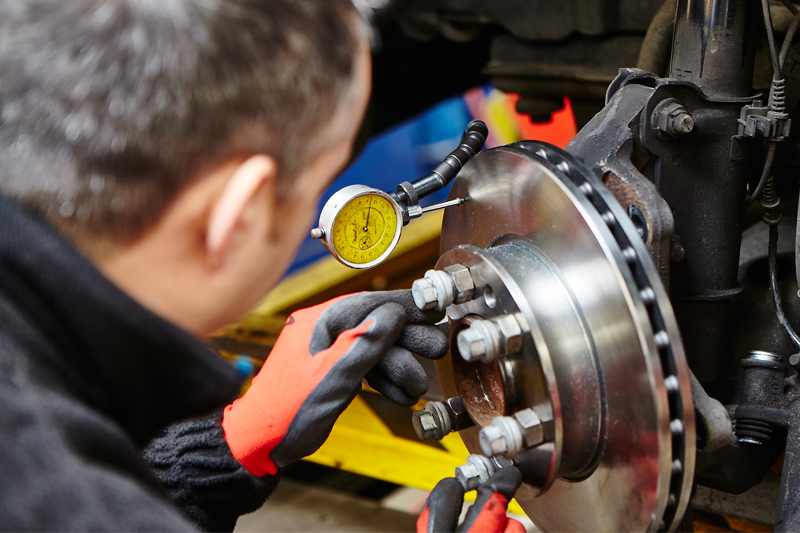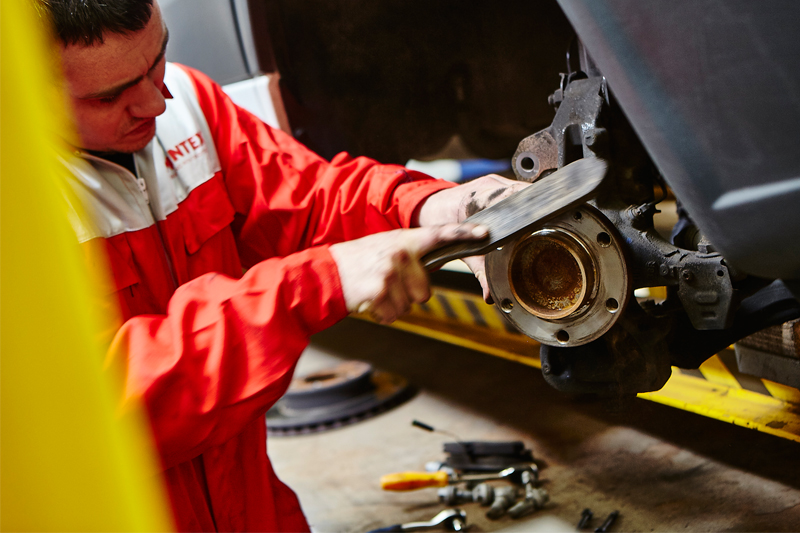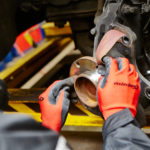How to avoid customer complaints about noise and brake judder with Mintex.
Getting jobs completed in a timely manner is the lifeblood of most garages across the UK. However, there is still an increasing trend of mechanics not having enough time to get the job done correctly, which is causing issues down the line. In this article, Scott Irwin, Technical Manager at Mintex, will discuss how best practice for brake replacement is often overlooked, resulting in customers complaining of noise or brake judder.
“I usually get calls from garages complaining of brake judder and they blame the brake products, especially after trying several sets of pads. On further inspection, I always find it is down to the way they have been fitted or the vehicle itself.”
Time is money for garages, which means jobs need to be done as quickly and as efficiently as possible. So, when it comes to replacing brakes, simple tasks such as cleaning down the hub can be deemed unnecessary and are frequently missed. These simple steps can have a huge impact on the overall job, yet only take a few extra minutes to implement.
In my job, I see this scenario all too often; I usually get calls from garages complaining of brake judder and they blame the brake products, especially after trying several sets of pads. On further inspection, I always find it is down to the way they have been fitted or the vehicle itself.
I recently visited a company that was complaining its fleet of Astras was experiencing severe brake noise. When I got them onto the ramp, there was evidence of bad practice in action. The problem was that, on the Vauxhall Astra, the rear caliper has a recess where the pip on the rear of the pad needs to be accurately aligned. If it’s not aligned correctly then the pad becomes damaged and generates noise.
All too often, the problems I see are down to small tasks that have not been carried out. Here’s my guide on some simple yet very effective jobs to ensure the correct fitment of brakes each and every time.

Brake preparation and rust removal
Before beginning the brake replacement process, it’s key to look for uneven wear on the discs and pads, as well as checking all components surrounding the axle and examining the hydraulic system for any broken parts. Parts showing signs of heavy wear or defectiveness should be replaced in accordance with the vehicle system and brake manufacturer’s guidelines.
When dismantled, it’s imperative to remove any rust or residue from the contact surfaces and caliper bracket as this can result in the pads sticking. To prevent the likelihood of brake judder, use a wire brush or emery paper to get rid of any rust from the hub surface. Once removed, use a brake cleaner to clean the surface and check the cleaned hub with a DTI gauge for any possible lateral run- out deviations. During the cleaning process, it’s important to take great care not to damage the caliper bracket or hub.

Greasing the surface
Grease the newly-cleaned areas with a non- conductive, heat-resistant and solids-free agent such as Mintex Ceratec Advanced Lubricant. Do not use copper slip on the caliper bracket, pads or hub as it conducts heat and can react negatively with the vehicle’s ABS system.
Fitting the new brake disc
Fit the new brake disc onto the wheel hub and secure the newly fitted disc with the screws, wheel studs or nuts. A DTI gauge should be used to check for any lateral run- out. We recommend a lateral run-out of 0.07mm below the maximum radius.
Putting the pistons back into the caliper
Using the correct adjusting tools, the brake piston(s) must be moved back into position, taking note of any brake fluid that may spill out of the brake fluid reservoir. Also, be sure to pay attention to the different versions of the caliper and brake systems, as well as manufacturer- specific requirements and special tools.

Aftercare
To optimise braking performance, Mintex recommends the new brakes require approximately 200 miles to become fully conditioned. Hard or aggressive braking must be avoided during this period as it can affect the overall performance of the new system.
Ask the experts
Vehicles and their braking systems are always evolving and it’s hard for mechanics to keep on top of them. If you’re not sure of how to fit a particular brake part or component then get in touch with Mintex’s technical team. As brake experts, we live and breathe it, constantly developing new products and testing processes. We understand it’s hard for garages to be complete experts in every area of a vehicle, which is why Mintex has its own technical team to call upon.










